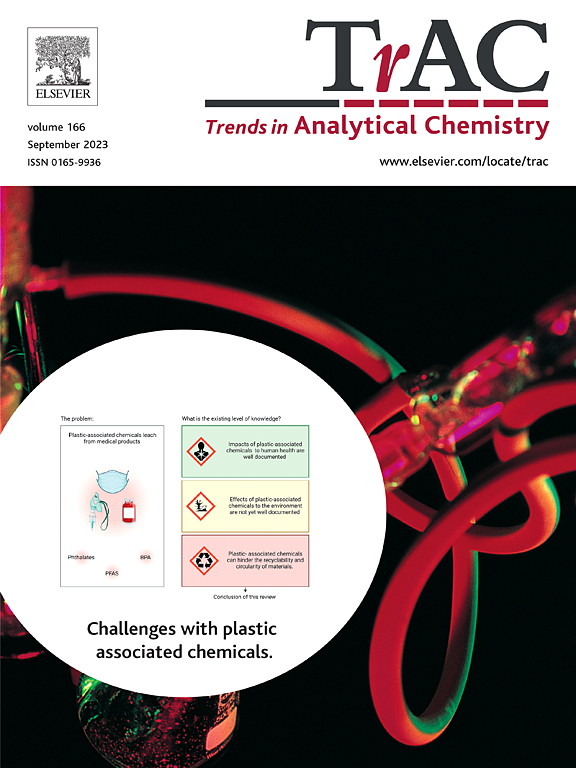Mapping micro(nano)plastics in various organ systems: Their emerging links to human diseases?
IF 11.8
1区 化学
Q1 CHEMISTRY, ANALYTICAL
引用次数: 0
Abstract
Micro(nano)plastic (MNP) contamination has become an urgent global environmental issue, causing immeasurable potential harm to humans. However, direct evidence on the impact of MNPs on human health remains limited. This article summarizes related research hotspots, maps MNPs in various human organ systems, and emphasizes their alarming links with diseases. There is growing evidence that MNPs are present in the respiratory/digestive tract, skin surfaces, blood (vessels), and reproductive organs. The existence of these MNPs is positively correlated with the occurrence of tissue lesions, such as inflammatory bowel disease, atherosclerosis, thrombosis, and cervical cancer. MNPs can be internalized by human cells, causing oxidative stress and pro-inflammatory responses, and leading to genotoxicity and apoptosis. MNPs may even cross the human gut-brain axis and blood-brain barrier, inducing neurodegenerative diseases. The potential hazards of MNPs to humans require urgent attention, and additional monitoring experiments and epidemiological studies are needed to further elucidate the relevant mechanisms.

求助全文
约1分钟内获得全文
求助全文
来源期刊

Trends in Analytical Chemistry
化学-分析化学
CiteScore
20.00
自引率
4.60%
发文量
257
审稿时长
3.4 months
期刊介绍:
TrAC publishes succinct and critical overviews of recent advancements in analytical chemistry, designed to assist analytical chemists and other users of analytical techniques. These reviews offer excellent, up-to-date, and timely coverage of various topics within analytical chemistry. Encompassing areas such as analytical instrumentation, biomedical analysis, biomolecular analysis, biosensors, chemical analysis, chemometrics, clinical chemistry, drug discovery, environmental analysis and monitoring, food analysis, forensic science, laboratory automation, materials science, metabolomics, pesticide-residue analysis, pharmaceutical analysis, proteomics, surface science, and water analysis and monitoring, these critical reviews provide comprehensive insights for practitioners in the field.
 求助内容:
求助内容: 应助结果提醒方式:
应助结果提醒方式:


